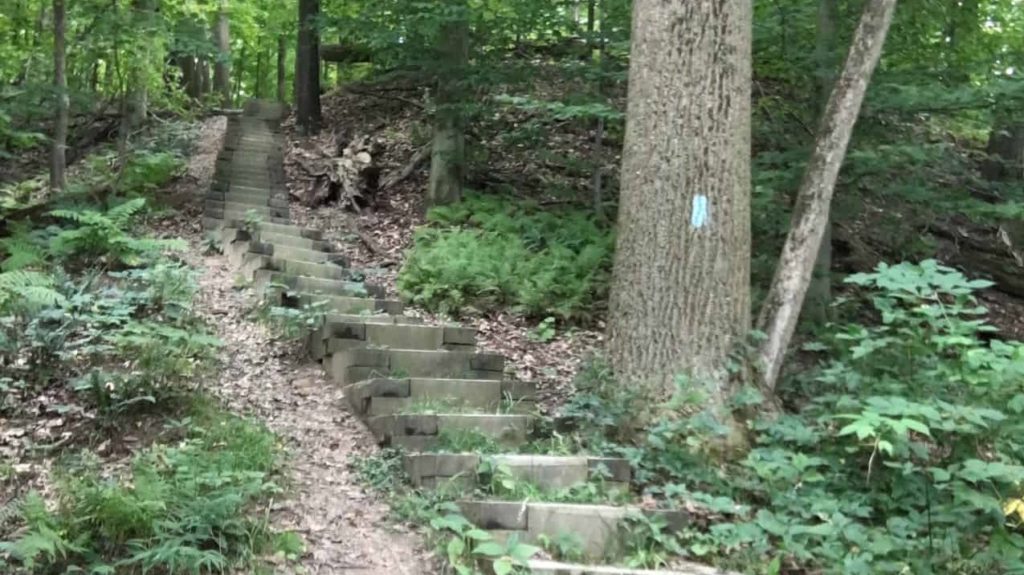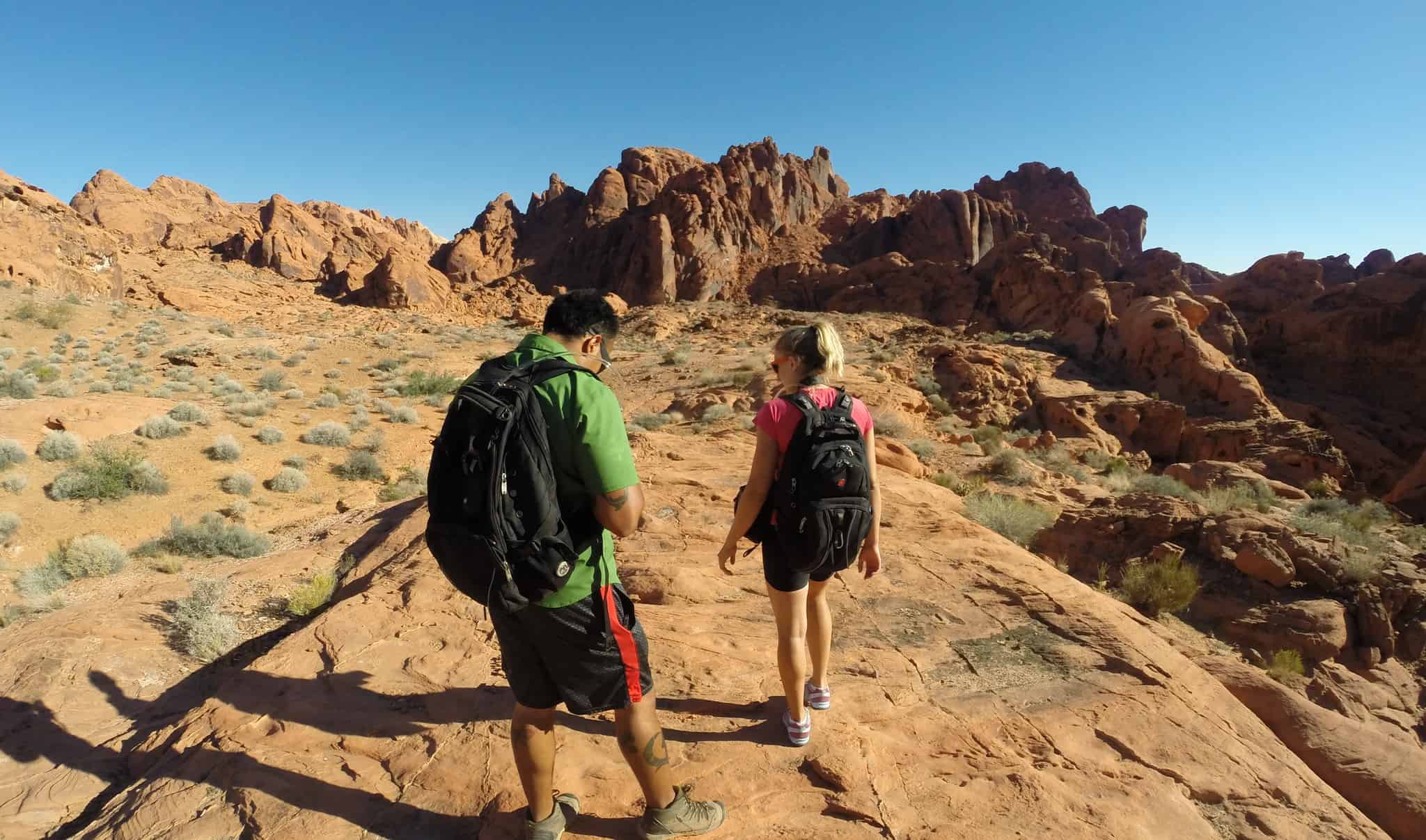Last updated on April 14th, 2021 at 05:20 pm
Hiking can be so enjoyable, you might find yourself wondering whether you’re really working hard at all. For those of us wanting to lose weight, this is important to confirm. After all, the more effort involved, the more calories burned. In this post, we look to get to the bottom of the age-old question: Does hiking burn more calories than walking?
While there are benefits to both hiking and walking outside of the calories they require, for those wanting to shed weight it is important to know the most productive ways to spend our time.
The simplest answer to this question is yes, hiking will burn many more calories than walking. The lack of uniform terrain and up-and-down nature of most hikes requires more energy, increases heart rate, and demands a more full-body workout.
Below we cover many real-world examples, variables, and exceptions impact calories burned hiking and walking. Read through the rest of this post to ensure you are spending your time on the activities that provide the most impact.
Hiking Burns More Calories Because it Takes More Work
We might not think of hiking as work, but our bodies do.
Hiking might be fun and provide beautiful scenery, but the intricacies of hiking make you work harder. Whether it feels like you are working harder or not your bodies are being asked to spend more energy to take each step, and complete each mile.
Difficult Terrain Burns More Calories While Hiking

All things being equal, a mile of walking is much flatter than a mile of hiking. Additionally, most walking routes are paved, and paved routes offer minimal resistance to our normal gait. There is little variation in our steps and movements when walking on an asphalt or concrete path.
RELATED: Speed Hiking Shoes for Any Terrain | Don’t be a Drag
Minimal variation in the steps we take might make a very small impact on the energy we expend per step, but what if we are taking 10,000 steps? The seemingly insignificant per step exertion begins to add up when looking at the total number of steps.
Hiking Obstacles Take Energy To Work Around

Hikes just have more stuff to contend with. In addition to unpaved paths, it is very common to come across rocks, roots, and fallen trees on a hike. Again, these obstacles are small on their own, but every additional body movement requires energy and thus, burns calories.
Using my most recent Sunday morning hike as an example, there were multiple trees that had fallen over the trail I was hiking. I found myself having to step over trees multiple times, and on one occasion I had to limbo underneath a fallen tree that had been propped up by a giant boulder.
Calculating Calories Burned Hiking
How many calories are actually burned while hiking? Below I provide a comparison chart that shows how many calories I burned on a hike vs the calories I burned on a walk of the same duration.
As you will see, the hikes burned many more calories than the walks of the same duration and distance.
Calories Burned Hiking vs Walking Table
| Duration | Distance Covered | Calories Burned Hiking | Calories Burned Walking |
|---|---|---|---|
| 45 min. | 1.6 miles | 324 Calories | 219 Calories |
| 60 min. | 2 miles | 433 Calories | 292 Calories |
| 120 min. | 3.9 miles | 865 Calories | 583 Calories |
Note that the table above uses time and distance covered as a point of reference; the further a hike the more drastic the difference in calories burned from any given walk. Yes, it isn’t always easy spending 120 minutes hiking or walking, but keep in mind that you can always increase the speed of the hike to make a faster impact on the number of calories burned.
RELATED: Speed Hiking vs Trail Running
Calories Burned HQ provides a pretty cool tool for calculating the calories burned on a hike if you would like to walk through an exercise similar to the chart above.
The tool may seem a bit rudimentary, but it allows you to enter your weight, distance, duration, and a number of other metrics from any given hike to come up with an estimated number of calories burned on that hike.
Hiking Engages your Core Muscles
According to Harvard University (source) hiking is a good core workout. We might think of hiking as a leg workout or general cardiovascular exercise, but it is much more. Uneven terrain, and the need to mind your footing has a hidden benefit for your abdominal, and lower back muscles.
While you likely won’t get ripped just by hiking, you will burn more calories hiking than walking. This is in part due to the additional muscles being engaged during your efforts. Core muscles aren’t engaged nearly as often on a typical walk. This is just another reason why hiking burns more calories than walking.
Cumulative Calories Burned
Any single hike is likely to burn more calories than any single walk. That said, adding hiking to your regular workout routine is best to see cumulative results.
Hiking once a month is great for that hike, but engaging in just one hike each month won’t provide a large impact.
Make an effort to slowly increase the frequency of your hikes. Try going on a strenuous hike once every weekend to start. Maybe add a short mid-week hike to your routine to really make a dent in your workout goals.
Regardless of your level of physical fitness, hiking proves to burn more calories than walking. For that reason, hiking is a fantastic activity for those wanting to lose weight or stay in shape.
Many Variables Affecting Calories
To understand which activities burn more calories we need to first level the playing field across activities to make sure we are comparing “apples to apples”. That is to say, we shouldn’t compare a hike in Rocky Mountain National Park to a walk in a neighborhood.
The variables affecting calories being burnt aren’t limited to the hikes themselves, either.
Our Bodies Burn Calories Differently
All of our bodies are different. All of our bodies will react differently to certain exercises. Outside of our independent physiology, we all tend to use our bodies differently for different activities.
For example, maybe I tend to hike really slowly while paying close attention to my surroundings. This might just be the way I enjoy hiking. Hiking in this manner could be completely opposite someone else. Maybe you are a speed hiker, focusing just as much on the speed of your route as the scenery.
While there is no right or wrong way to hike, one can also say that each of the above hiking philosophies will produce greatly different outcomes as far as the number of calories being burnt.
Terrain and Environment as Variables
In addition to our bodies and our varying preferences, there are also great variables in the types of environments we are hiking in.
Hiking in the flatlands of Indiana is going to burn fewer calories than hiking in the West Virginia mountains.
In that same vein, walking through the hills of San Francisco will likely burn more calories than walking on a suburban sidewalk in Oklahoma.
Taking the above variables into consideration lets go over why hiking burns more calories than walking.
Image Credit: Adam Bautz (https://www.flickr.com/photos/130811041@N04/) | Attribution 2.0 Generic (CC BY 2.0) — Reduced file size and cropped
Image Credit: Murray Foubister (https://www.flickr.com/photos/mfoubister/) Attribution-ShareAlike 2.0 Generic (CC BY-SA 2.0)

